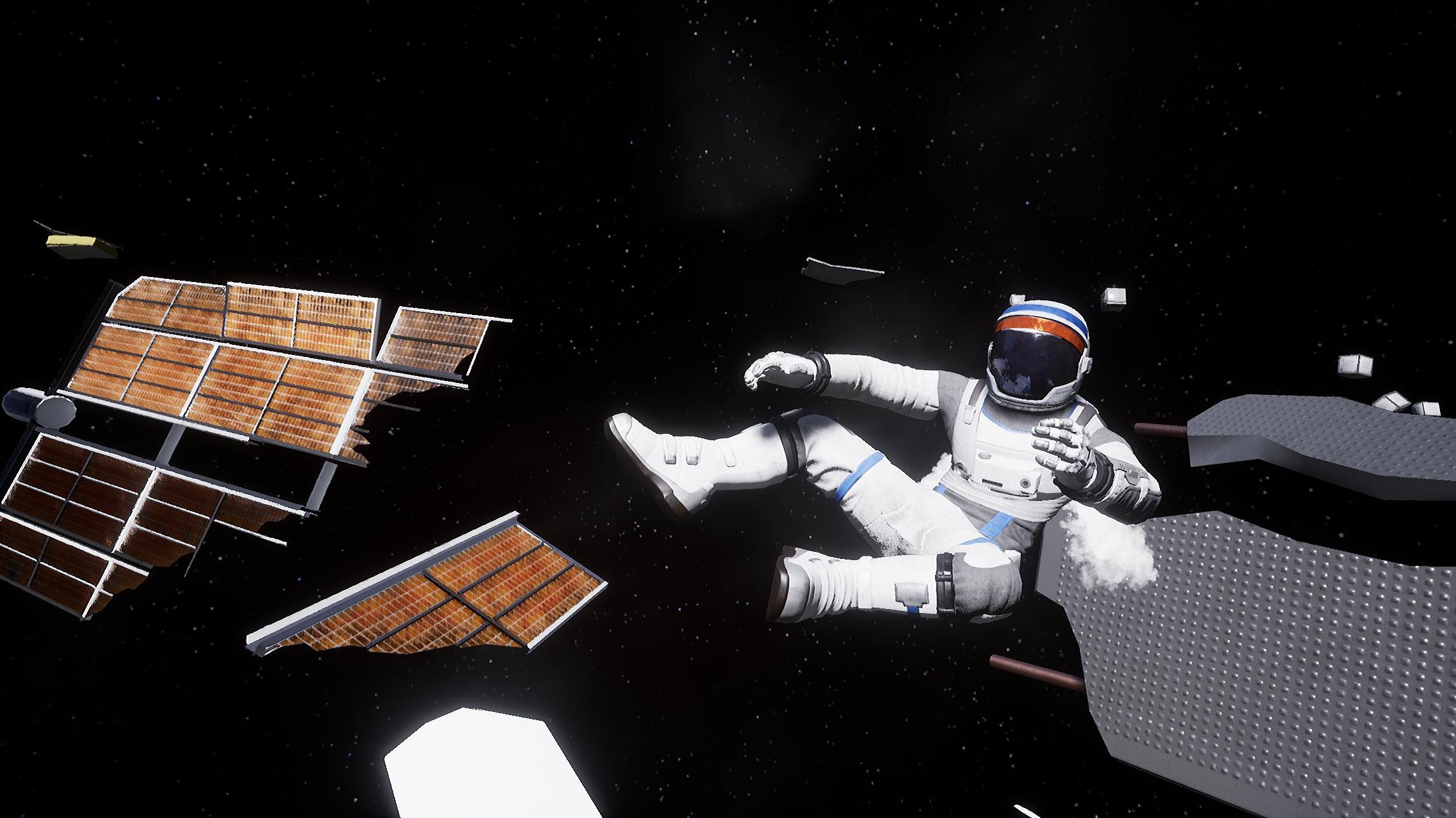

This mechanic leans on the realism side, with players using the left and right triggers to aim and strike with each arm. Platforming plays a more significant role now that Kathy can scale particular walls using climbing axes. Outside of that, a sometimes disorienting though enjoyable hologram decryption minigame, where you rotate the drone’s camera to place nodes into slots, serves as the only other big recurring puzzle. However, Deliver Us Mars lacks the gameplay variety of its predecessor, so beam alignment lost its luster by the end.

The puzzles offer decently fun obstacles. The drone can access small openings and carry objects, though it doesn’t feel as well-utilized as in Deliver Us The Moon.

As in the first game, players switch between controlling Kathy and her robotic drone companion to solve environmental tasks, often revolving around aligning power-giving light beams to open doors. Gameplay primarily focuses on puzzle-solving and platforming, which only cross into “acceptable” territory. Deliver Us Mars doesn’t look awful, but these constant blemishes distract from the immersion. Mars itself would be a more awe-inspiring sight if not for numerous instances of texture and environmental pop-in. The ugly, stilted character models sour the exceptional performances it’s like watching lousy animatronics perform Macbeth. The plot also presents well-worn but compelling arguments regarding the morality of starting anew elsewhere in the face of humanity’s self-destructive nature.ĭeliver Us Mars’ narrative is so good that its sub-par presentation doesn’t do it justice. The engaging mystery regarding the fate of the Mars colony once Kathy arrives also kept me glued to see what’s next, thanks to its compelling twists and revelations. The game’s well-executed exploration of the pair’s loving-yet-complex relationship hooked me, especially how Kathy copes with wanting to reunite with the man who effectively helped doom humankind – a goal that causes a tense conflict with her crewmates. In the process, he left Kathy to grow up on a dying Earth without him. Kathy’s father, Issac, a brilliant scientist, was among the leaders of this rogue group that stole Earth’s best chance at recovery. As Kathy, a bold and prodigious young astronaut, you join a small team tasked with bringing the Arks back to Earth, but Kathy has a compelling personal stake as well. Years prior, a group of humanity’s best and brightest stole these vessels to abandon Earth to its fate and establish a new colony elsewhere. Soon it will become an uninhabitable rock, but hope arises when a transmission from Mars pinpoints the location of advanced life-giving ships called Arks. Earth has spiraled into an irreversible environmental collapse thanks to decades of man-made abuse. Thankfully, a captivating narrative does its best to keep this flawed mission on track.ĭespite being a direct sequel, you don’t need to play Deliver Us The Moon to grasp Mars’ plot. The same is nearly true of this sequel set on the Red Planet, though its larger scope magnifies its problems. Deliver Us Mars follows in the footsteps of hidden gem Deliver Us The Moon, a game with enjoyable puzzle-solving and storytelling that mostly overcame its technical and presentational shortcomings.


 0 kommentar(er)
0 kommentar(er)
